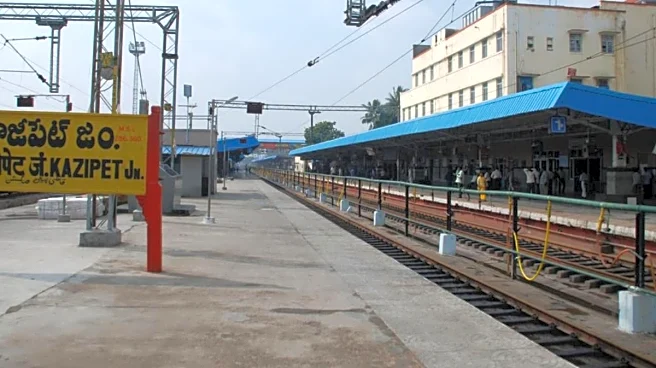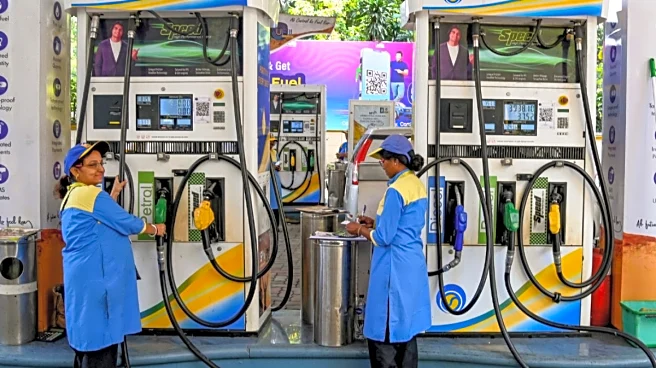Step off a train at Kazipet Junction in Telangana, and you are immediately struck by its noise. The constant clatter of wheels on tracks, the screech of brakes, and the steady hum of announcements in Telugu,
Hindi, and Urdu create a symphony of movement. Amid the constant rhythm of whistles and rolling wheels, Kazipet Junction hums with a quiet authority, as if it knows the stories of every traveler who has passed through its platforms.
This station echoes as the living museum of Indian railway history, linking the sprawling landscapes of the North to the sun-drenched reaches of the South. It is more than a railway station; it is a witness to history, a crossroads where languages, cuisines, and cultures collide.
For decades, this busy junction has linked Delhi and Chennai, serving as a lifeline for thousands of passengers every day. But beyond trains and timetables, Kazipet carries history. Its old platforms, vintage signal towers, and colonial-era architecture make it a heritage site that’s easy to overlook but hard to forget.
Situated in the Hanamkonda district, Kazipet Junction has served as the gateway between regions, a place where cultures and languages converge in the daily movement of commuters, traders, and travelers. Yet, its significance goes far beyond the ordinary bustle of a railway hub. It became especially prominent with the construction of the Kazipet-Balharshah section, which was the final link in the grand Delhi-Madras railway corridor. This line not only facilitated commerce and mobility but also gave rise to one of India’s oldest and most storied trains: the Grand Trunk Express, affectionately known as the GT Express.
What is The History Of Kazipet Junction?
Kazipet Junction has a long and significant history within the Indian Railways, tracing back to the late 19th century. Established in 1888, the station was originally part of the Nizam’s Guaranteed State Railway (NGSR), a network built to support both passenger travel and freight transport in the princely state of Hyderabad. Its creation marked a pivotal development in linking the northern and southern regions of India, providing an essential corridor for trade and commerce during the colonial period.
In its early years, Kazipet Junction played a crucial role in handling goods such as coal, cotton, and other commodities, making it a vital hub for the region’s economic activity. The station facilitated the movement of resources from the hinterlands to industrial and urban centers, significantly contributing to the growth of local and regional economies. Its strategic location made it a key junction for trains traveling between North and South India, and it quickly became one of the busiest stations in the area.
Over the decades, Kazipet Junction has undergone substantial development and modernization. Additional platforms and tracks were added to accommodate increasing passenger and freight traffic, while modern amenities were introduced to improve traveler experience. Today, the station is a major hub within the South Central Railway zone, specifically in the Secunderabad division. Despite these expansions, Kazipet retains elements of its historical importance, serving as both a heritage landmark and a functional node that continues to bridge northern and southern India. Its enduring significance reflects not only the evolution of the Indian Railways but also the historical and economic narrative of the region.
Several structures from the British era still stand, including signal towers and platform shelters with wooden beams and aged brickwork but has now gone several expansions over the years. Some features are preserved not merely as relics but as functional parts of the station, blending heritage with utility. For history enthusiasts, a stroll along the platforms is akin to a walk through a living museum, where every corner tells a story of planning, strategy, and the engineering feats of the 19th and early 20th centuries.
Why Does Kazipet Reflect India’s Cultural Diversity?
As a junction that links North and South India, Kazipet is a microcosm of the country itself. One can hear Hindi, Telugu, Marathi, and other regional languages in a single platform. Food stalls reflect culinary diversity, offering everything from spicy South Indian idlis to North Indian samosas. The passengers, whether daily commuters, long-distance travelers, or families embarking on festive journeys, represent a mosaic of India’s social and cultural fabric.
The experience of being at Kazipet is an immersion into the soul of India’s railway culture. Vendors line the platforms selling samosas, chai, and local snacks, while railway porters skillfully manage luggage with practiced efficiency. The station is alive with a cacophony of announcements, conversations, and the rolling of wheels — each sound blending into a rhythm that feels almost musical. Passengers often remark on the junction’s palpable energy, which combines both historical gravity and contemporary hustle.
How Does Kazipet Bridge North and South India Today?
Kazipet serves as a vital junction connecting Hyderabad, Warangal, Secunderabad, and other key southern cities to the northern railway network extending towards New Delhi, Nagpur, and beyond. Each day, hundreds of trains pass through, ranging from long-haul express trains to local passenger services. For travelers, this junction is more than a logistical hub; it is a place where journeys intersect, where a merchant from Nagpur might share a platform with a student from Hyderabad, and where stories of migration, education, and commerce unfold with every train arrival.
Kazipet has been a catalyst for economic and social development in the surrounding districts over the century. The junction facilitates trade, enables workforce mobility, and enhances connectivity for educational and healthcare access. Towns around the station have grown in tandem with its increasing importance, highlighting how transportation infrastructure can shape local economies and social landscapes.
While modern amenities have been introduced, the station retains its old-world charm. The mixture of colonial architecture, historical signaling equipment, and the cadence of departing trains transports visitors to a period when railways were the arteries of the nation. Observing the coordination between station staff, the precision of train timings, and the flow of passengers gives one a sense of both nostalgia and admiration for India’s railway legacy.





/images/ppid_a911dc6a-image-176124485522167795.webp)






